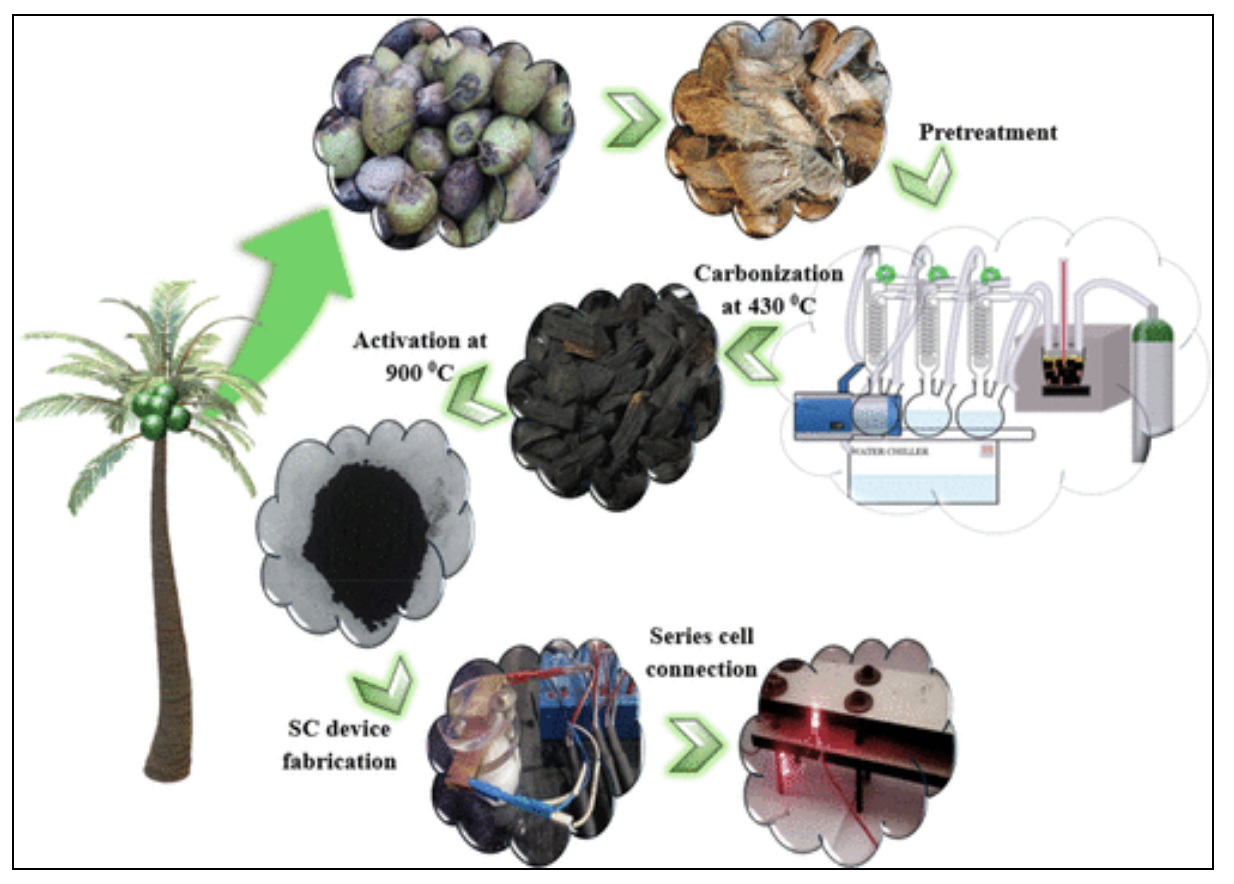News Excerpt:
Researchers at the Government College for Women in Thiruvananthapuram have developed an innovative method to produce activated carbon from coconut husks, a major agricultural residue in Kerala.

Process Involved:
- The research team utilized a microwave-assisted method designed at the Centralised Common Instrumentation Facility (CCIF) of the college.
- This method allows for the production of high-quality activated carbon within five minutes, using an advanced microwave pyrolysis reactor.
- The process eliminates impurities such as ash and generates zero waste.
- The resulting activated carbon boasts an impressive surface area of 1,200 m²/g and a highly porous structure, making it ideal for supercapacitor applications.
Significance of the Experiment:
- The coconut husk-derived activated carbon offers a sustainable and efficient green solution for supercapacitors due to its availability, low cost, and environmentally friendly nature.
- Supercapacitors, known for their significantly higher capacitance and energy storage capacity compared to conventional capacitors, are crucial for advancing sustainable energy storage solutions.
- However, finding an ideal supercapacitor electrode material has been a challenge.
- The prototype supercapacitors made from this activated carbon were found to be four times more efficient than existing supercapacitors.
- This method is not only inexpensive but also exhibits exceptional supercapacitor capabilities.
- The innovative microwave-assisted method is also under consideration for an Indian patent, opening new avenues for the production of activated carbon.
Impact and Future Prospects:
- This breakthrough has significant implications for the field of energy storage.
- The high-power output of these supercapacitors is demonstrated by their ability to power two LEDs for 20 minutes.
- The research has been published in the American Chemical Society’s peer-reviewed Sustainable Resource Management Journal, highlighting its importance.
The development of eco-friendly supercapacitors using coconut husk-derived activated carbon marks a significant step forward in sustainable technology, potentially transforming how energy storage solutions are approached in the future.
|
Centralised Common Instrumentation Facility (CCIF) CCIF, funded by the State government of Kerala, plays a pivotal role in supporting the research with world-class facilities. The facility is equipped with advanced instruments like Nuclear Magnetic Resonance (NMR) spectrometers, Brunauer-Emmett-Teller (BET) analyzers, fluorometers, electrochemical workstations, and PCR machines. This facility has catered to the needs of researchers from over 50 colleges, six universities, and six national institutes. |
|
Activated Carbon
|


